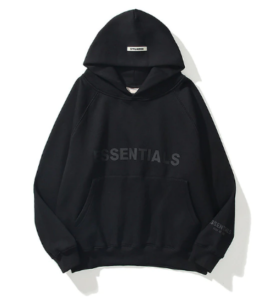In today’s world, businesses are increasingly prioritizing sustainability, and the screen printing industry is no exception. Adopting eco-friendly practices is essential not only to reduce environmental impact but also to meet consumer demands for sustainable products. This article explores practical steps to make screen print multi-color designs environmentally friendly, from choosing sustainable materials to reducing waste and optimizing production methods.
Why Eco-Friendly Practices Matter in Screen Printing
Screen printing, especially when producing multi-color designs, traditionally relies on resources like plastics, chemicals, and water. Transitioning to sustainable practices can reduce environmental harm while maintaining the quality and vibrancy of the designs.
Key Benefits of Eco-Friendly Screen Printing
- Reduced Carbon Footprint: Minimizes emissions and waste.
- Enhanced Brand Image: Appeals to eco-conscious customers.
- Cost Savings: Energy-efficient and waste-reduction measures can cut operational costs.
Eco-Friendly Materials for Multi-Color Screen Printing
Switching to sustainable materials is a cornerstone of eco-friendly screen printing. Here’s how to make thoughtful material choices:
1. Water-Based Inks
Water-based inks are an excellent alternative to traditional plastisol inks. They are free from harmful chemicals and PVC, offering a safer option for both the environment and workers. These inks also produce soft and breathable prints, ideal for multi-color designs.
2. Organic and Recycled Fabric
Using organic cotton or recycled polyester reduces the environmental impact of fabric production. These materials pair beautifully with Screen Print Multi Color Designs, ensuring vibrant results without compromising sustainability.
3. Biodegradable Emulsions
Opt for emulsions that are biodegradable and non-toxic. These emulsions break down more easily, reducing pollution during cleanup.
Energy-Efficient Techniques for Multi-Color Screen Printing
Energy consumption is a significant factor in screen printing. Implementing energy-icient practices can reduce both costs and environmental impact.
1. LED Exposure Units
Switching to LED exposure units for screen preparation reduces energy usage compared to traditional halogen or metal halide units.
2. Low-Cure Inks
Low-cure inks require less energy during the curing process, making them a sustainable choice for BX fonts and intricate multi-color designs.
3. Optimized Drying Processes
Using efficient drying systems, such as conveyor dryers with infrared technology, ensures faster curing with minimal energy.
Waste Reduction in Screen Printing
Waste is a common challenge in screen printing, but it can be minimized with thoughtful strategies.
1. Reusable Screens
Invest in high-quality, reusable screens to reduce waste generated from frequent replacements.
2. Ink Recycling
Unused or excess ink can be stored and reused for future projects, reducing waste and costs.
3. Digital Mockups
Creating digital previews of screen print multi-color designs allows for adjustments before production, minimizing material wastage.
Eco-Friendly Cleaning Solutions
Screen cleaning often involves harsh chemicals that can harm the environment. Consider switching to biodegradable and non-toxic cleaning agents. These alternatives are effective while ensuring the safety of your team and the planet.
Design Strategies for Sustainable Screen Printing
Designing for sustainability doesn’t mean compromising creativity. Here’s how you can create eco-friendly yet stunning designs:
1. Simplify Color Palettes
Reducing the number of colors in a design can lower ink consumption and streamline production without sacrificing visual appeal.
2. Halftone Techniques
Halftone printing uses dots to create gradients and details, reducing ink usage while maintaining the intricacy of BX fonts and other detailed elements.
3. Modular Design Elements
Reuse design components across different products to minimize the need for new screens and setups.
Green Certifications and Standards
Obtaining certifications can demonstrate your commitment to eco-friendly practices and attract environmentally conscious clients. Consider these options:
- GOTS (Global Organic Textile Standard): For using organic materials.
- OEKO-TEX Certification: For ensuring textile safety.
- FSC Certification: For using responsibly sourced materials.
Educating Your Team on Eco-Friendly Practices
Sustainable screen printing requires a team effort. Provide training on topics like:
- Proper use and disposal of eco-friendly materials.
- Techniques for reducing ink and water usage.
- Importance of adhering to environmental standards.
Eco-Friendly Trends in Multi-Color Screen Printing
Sustainability is driving innovation in screen printing. Here are some trends shaping the future:
- Hybrid Printing: Combining traditional and digital methods for less waste and more efficiency.
- Upcycled Fabrics: Using materials from discarded textiles to create unique products.
- Custom Eco-Packaging: Offering clients sustainable packaging options for their orders.
Conclusion
Embracing eco-friendly practices in screen print multi-color designs is not only a responsible choice but also a smart business move. From sustainable materials to energy-efficient techniques and waste reduction strategies, there are countless ways to minimize your environmental impact without compromising quality. Incorporating these practices will not only help the planet but also elevate your brand in the eyes of eco-conscious consumers.
FAQs About Eco-Friendly Multi-Color Screen Printing
1. Can water-based inks achieve vibrant colors?
Yes, water-based inks produce vibrant colors and are ideal for screen print multi-color designs. They are especially effective when paired with light fabrics or an underbase for dark materials.
2. Are eco-friendly practices more expensive?
While some eco-friendly materials may have higher upfront costs, the long-term savings from reduced waste and energy usage often outweigh these expenses.
3. What are the challenges of using water-based inks?
Water-based inks can dry quickly, which may clog screens. Proper preparation and cleaning techniques can prevent this issue.
4. How can I promote my eco-friendly screen printing services?
Highlight your sustainability efforts through marketing materials, website content, and social media. Certifications and eco-friendly partnerships can also enhance your credibility.
5. Can I use BX fonts in sustainable designs?
Absolutely. BX fonts, known for their precision and versatility, can be seamlessly incorporated into eco-friendly multi-color designs by using halftone techniques and minimal color palettes.




